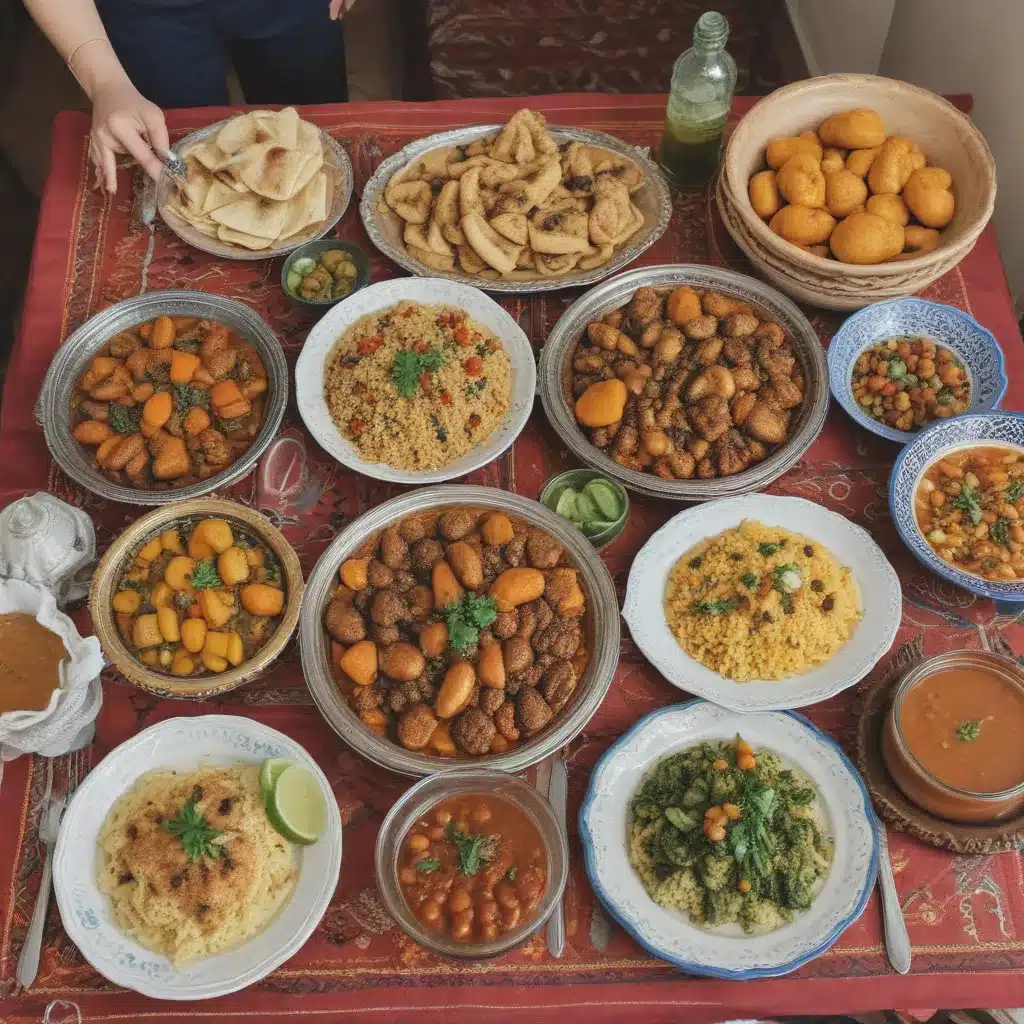
Unlocking the Secrets of Moroccan Cuisine
As I step into my kitchen, the enticing aroma of spices wafts through the air, and I’m instantly transported to the bustling souks of Marrakech. You see, I have a deep-rooted passion for Moroccan cuisine, and I’m here to share my love and expertise with you.
Preparing an authentic Moroccan meal at home may seem daunting, but I’m here to guide you through the process, revealing the secrets that will have your guests raving about your culinary prowess. From the vibrant flavors of tagine to the delicate balance of sweet and savory in couscous, I’ll leave no stone unturned as we embark on this flavorful journey together.
Mastering the Moroccan Pantry
The key to unlocking the true essence of Moroccan cuisine lies in the carefully curated selection of spices and ingredients that define this rich and diverse culinary tradition. As I open my pantry, I’m greeted by the warm embrace of cumin, the pungent aroma of coriander, and the earthy notes of ras el hanout – a quintessential Moroccan spice blend that’s as complex as it is captivating.
But it’s not just the spices that make Moroccan cuisine so unique. The use of fragrant herbs, such as mint and parsley, lend a refreshing contrast to the bold flavors. And don’t forget the staples like preserved lemons, which add a tangy, umami-rich depth to countless dishes.
To truly immerse yourself in the Moroccan culinary experience, I encourage you to take the time to explore your local specialty stores or even venture online to source these authentic ingredients. Trust me, the effort will be well worth it when you bite into that first mouthwatering morsel.
Crafting the Perfect Tagine
Now, let’s dive into the heart of Moroccan cuisine – the iconic tagine. This slow-cooked dish, named after the distinctive clay pot in which it’s prepared, is a true labor of love. As the ingredients simmer together, the flavors meld and intensify, creating a symphony of tastes that will leave your guests in awe.
One of the secrets to making a truly remarkable tagine is the careful balancing of sweet and savory elements. Whether it’s the addition of dried fruit, such as apricots or prunes, or the judicious use of honey and spices, the end result is a dish that tantalizens the palate and warms the soul.
But don’t be intimidated by the complexity of tagine – with a little practice and patience, you’ll be whipping up these culinary masterpieces in no time. I’ll let you in on a little trick: start with a basic recipe, and then let your creativity shine by experimenting with different protein sources, vegetables, and flavor combinations. The possibilities are endless!
Perfecting the Art of Couscous
No Moroccan feast would be complete without the humble, yet extraordinary, couscous. This delicate, steamed semolina pasta is the perfect canvas for a myriad of vibrant toppings and sauces.
One of the keys to preparing exceptional couscous is to ensure that it’s perfectly fluffy and light. I like to start by soaking the couscous in hot water or broth, allowing it to absorb the flavors before steaming it to perfection. And don’t forget the importance of fluffing the grains with a fork to achieve that coveted, airy texture.
But the real magic happens when you start to build upon the couscous base. From the aromatic vegetable stews known as “salades” to the rich, meat-based sauces, the possibilities are endless. I particularly enjoy topping my couscous with a fragrant, slow-cooked lamb tagine, complete with caramelized onions and a sprinkle of toasted almonds.
Embracing the Moroccan Dining Experience
Now that we’ve mastered the culinary aspects of a Moroccan feast, it’s time to set the stage for an unforgettable dining experience. After all, the true essence of Moroccan hospitality extends far beyond the food itself.
As your guests arrive, greet them with a warm smile and a refreshing glass of mint tea – the quintessential Moroccan beverage. This ritual not only sets the tone for the evening but also allows your guests to savor the moment and prepare their palates for the culinary delights to come.
When it’s time to sit down and enjoy the meal, encourage your guests to engage in the communal aspect of Moroccan dining. Serve the dishes family-style, allowing everyone to share and sample the various offerings. This interactive experience fosters conversation, laughter, and a sense of togetherness that is at the heart of Moroccan culture.
And don’t forget the importance of presentation. Adorn your table with vibrant, patterned textiles, ornate bowls, and perhaps even a few Moroccan lanterns to create a truly immersive atmosphere. After all, the Moroccan dining experience is as much about the ambiance as it is about the food.
Embracing the Essence of Moroccan Hospitality
As the evening draws to a close and your guests bid farewell, I hope they leave with a deeper appreciation for the rich tapestry of Moroccan cuisine and culture. After all, the true essence of Moroccan hospitality lies in the ability to transport your guests to a different world, one where the senses are awakened, and the soul is nourished.
So, the next time you’re craving the flavors of Morocco, don’t hesitate to don your apron and embark on a culinary adventure in your own kitchen. With a little bit of practice and a whole lot of passion, you too can create an authentic Moroccan experience that will leave a lasting impression on your guests.
And if you’re ever in New York City, I’d be delighted to welcome you to El Bahia, our Moroccan oasis where you can savor the flavors of my homeland and immerse yourself in the vibrant spirit of Moroccan hospitality. Until then, happy cooking, and bon appétit!


